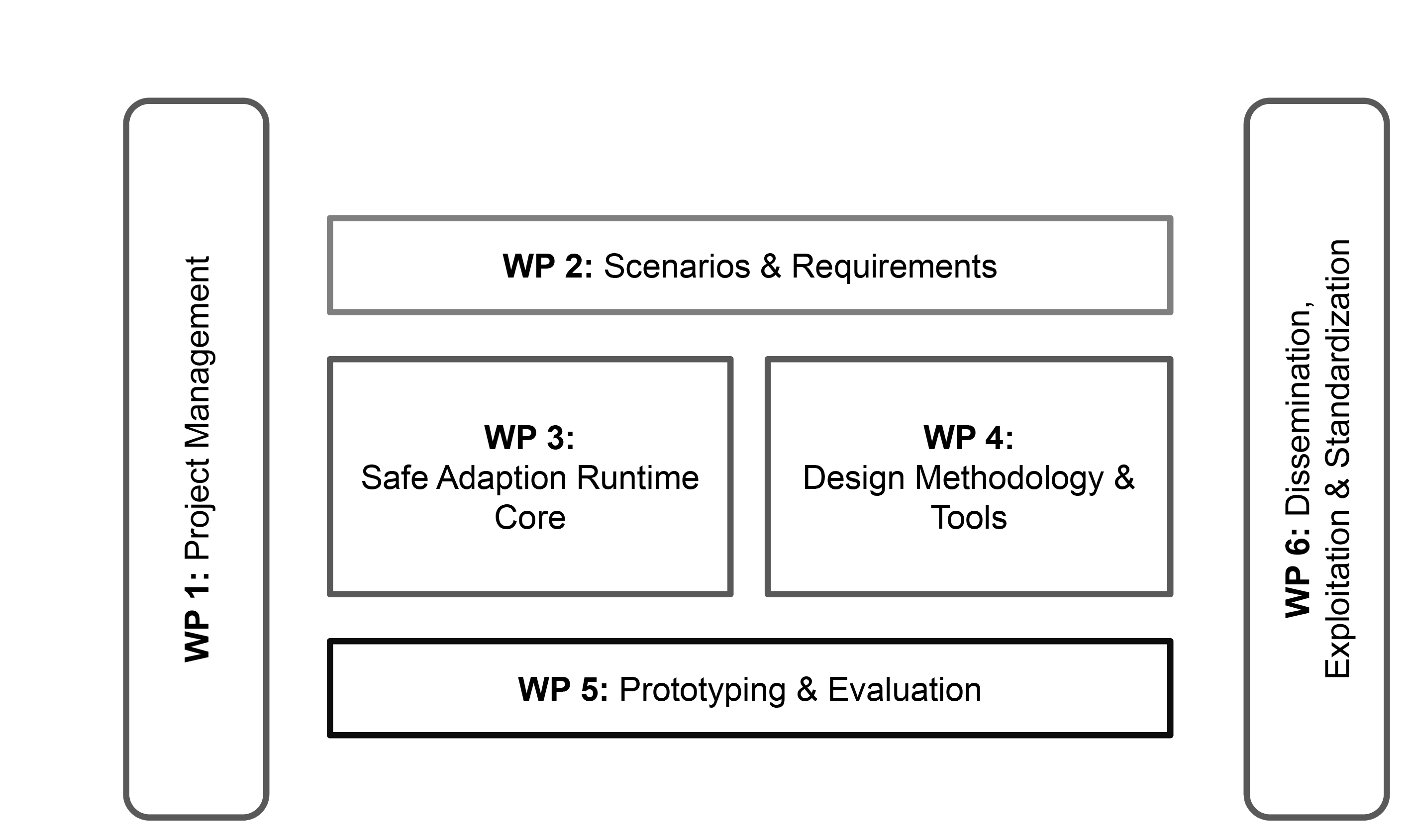The SafeAdapt project was executed in several phases. First, use cases and requirements for safe adaptation in FEVs were collected in WP2. Afterwards, the design process and the runtime enforcement of safe runtime adaptation were developed in WP3 & WP4. The prototype implementations resulting from these WPs were integrated into a full scale prototype e-vehicle in WP5. Based on this prototype vehicle the evaluation of the SafeAdapt project results was performed.
Work Packages
Overview of SafeAdapt's work packages

WP1 – Project Management: This work package covered all managerial tasks as outlined in Section 2.1.
WP2 – Scenarios and Requirements: Scenarios, use cases and requirements were collected in this work package. The work in the following work packages was performed in parallel and was iteratively refined in appropriate versions of prototypes.
WP3 – Safe Adaptation Runtime Core: WP3 used the results of WP2 and developed, designed and implemented the specified runtime control for enforcing safe adaptation in networked embedded systems with respect to safety-critical applications. Also the enforcement of safe adaptation during runtime was specified in this WP. SafeAdapt managed resources during runtime by means of reconfiguration algorithms.
WP4 – Design Methodology & Tools: WP4 performed detailed specification of the integrated design process and the necessary tool flow for safe adaptation of networked embedded systems for the e-vehicle domain, which was complemented with the specification of ISO26262 functional safety goals for the runtime adaptation scenario. Furthermore, the tools necessary for the design of safe adaptive systems were adapted, modified or implemented in this WP.
WP5 – Prototyping & Evaluation: WP4 coped with all tasks for building a prototype e-vehicle comprising the evaluation of the achieved results, which are subject to exploitation in the next WP. Metrics for the evaluation of reliability, availability, efficiency, and flexibility were set up. The results of the WP3 and WP4 were compared to current state-of-the-art systems in the automotive domain.
WP6 – Dissemination, Exploitation and Standardization: Finally, WP6 covered all activities concerning the dissemination and exploitation. There were several tasks planned for the dissemination and exploitation of the project results for achieving highest market impact. For example, the participation on several conferences and publishing of publications in order to promote the solutions adopted during the project. The aim was also to support the activities with respect to standardization and approaching the most suitable bodies.
 Safe Adaptive Software for Fully Electric Vehicles
Safe Adaptive Software for Fully Electric Vehicles